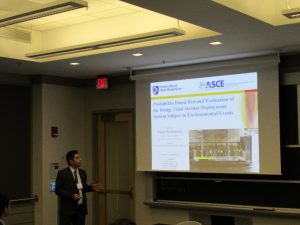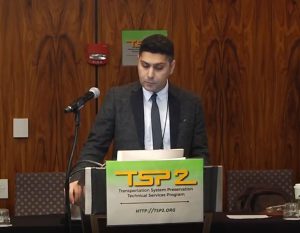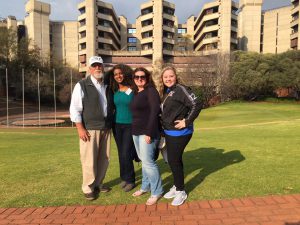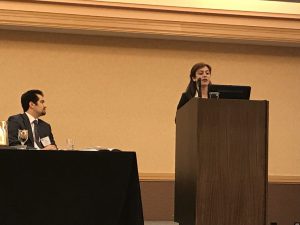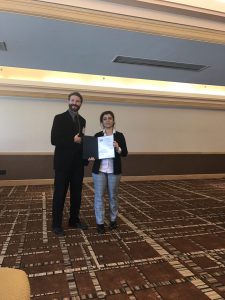In a parallel project funded by the New Hampshire Department of Transportation (Evaluation of Gusset-less Truss Connection to Aid Bridge Inspection and Condition Assessment), two scaled sections of a typical lower-chord gusset-less connection will be tested for fatigue loading at the UNH Structural Engineering Laboratory. The test setup in its current state, is shown below in Figure 1.

Figure 1 – Fatigue Test Setup
The purpose of these tests is to evaluate the fatigue performance of intact welds as well as welds with defects located along the bend radius of the connection. The connection specimen, shown below in Figure 2, is being exposed to cyclic loading ranging from 5,000 lbs to 105,000 lbs at a frequency of 3.5 Hz. This loading protocol is more severe than what the actual bridge connection experiences under heavy traffic. Since the weld is designed to have “infinite fatigue life,” the in-tact weld is not expected to fail. After one million cycles, if this is the case, it is planned to introduce damage to the weld to simulate a defect. The test will then continue until failure has occurred.

Figure 2 – Gusset-less Connection Specimen
The results of these fatigue testing are important for understanding and quantifying the fatigue performance of this unique connection, to inform not only Memorial Bridge inspection protocols but also the development of reliable numerical models that could be useful for long-term bridge management purposes. In addition, the results obtain from this study will provide valuable data useful to evaluate the potential incorporation of gusset-less connections into future bridge designs.
Written by: Fernanda Fischer, Duncan McGeehan, Shokoufeh Zargar
Students currently working on test: Duncan McGeehan, Shokoufeh Zargar, Andrew Lanza
